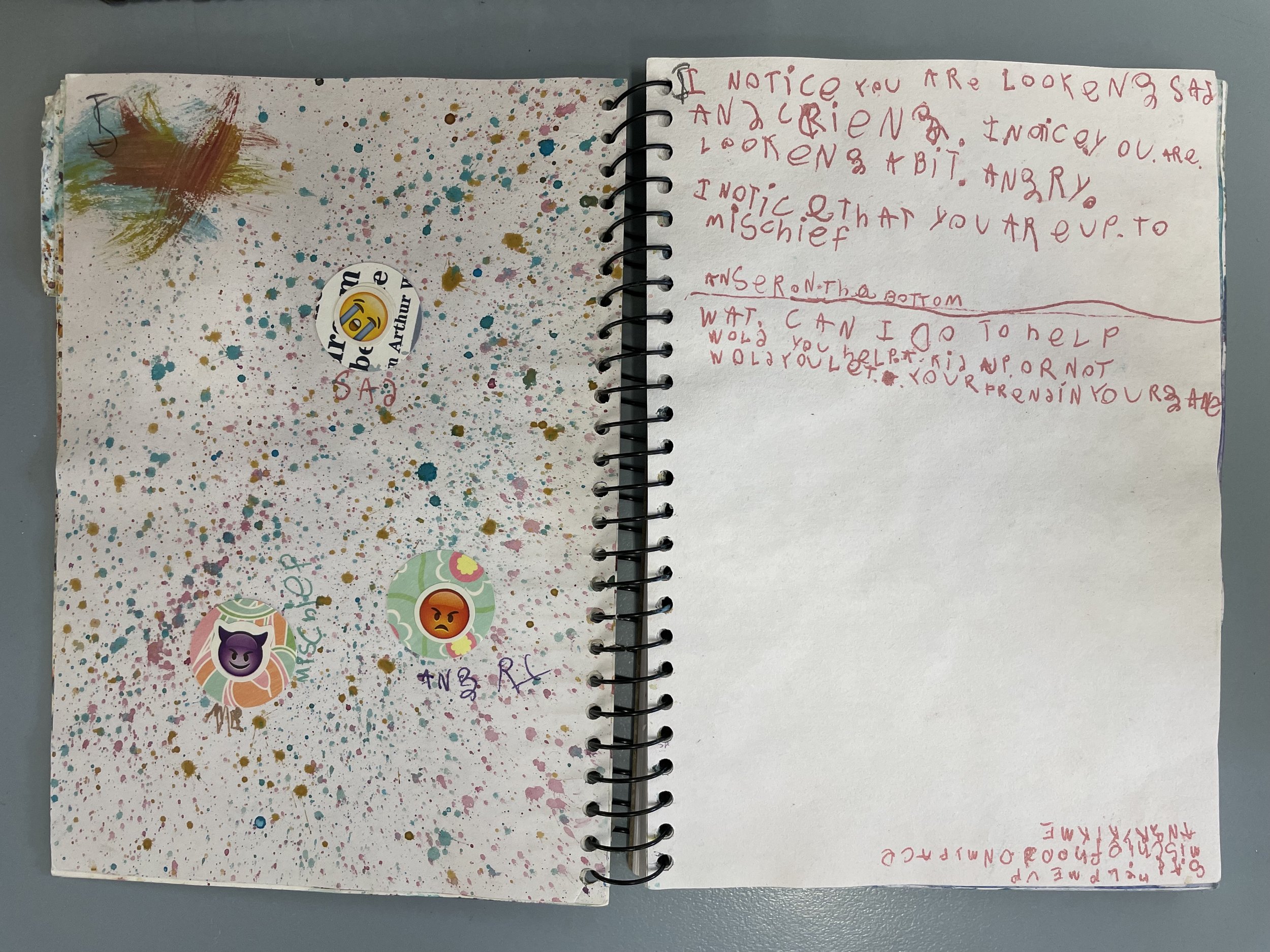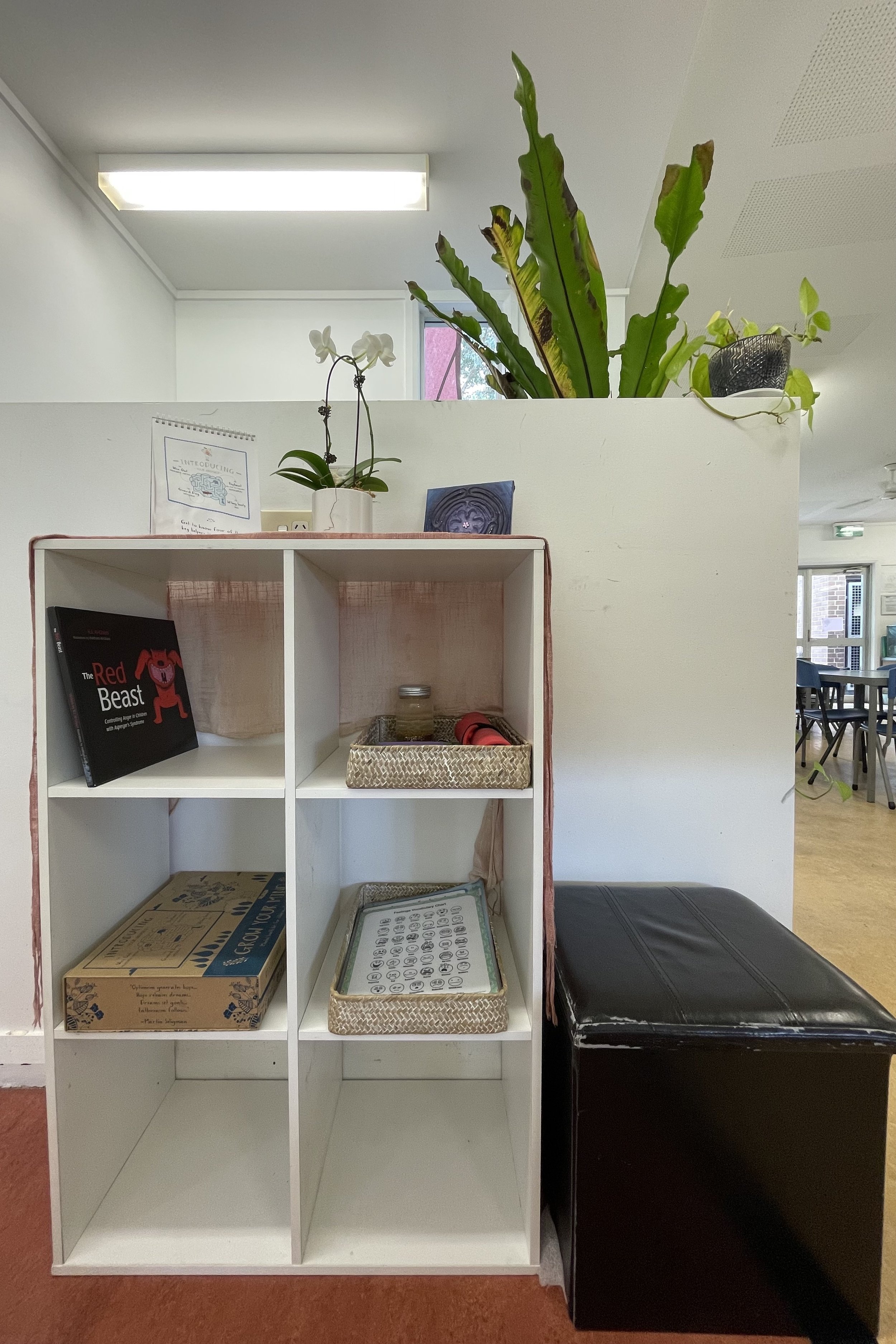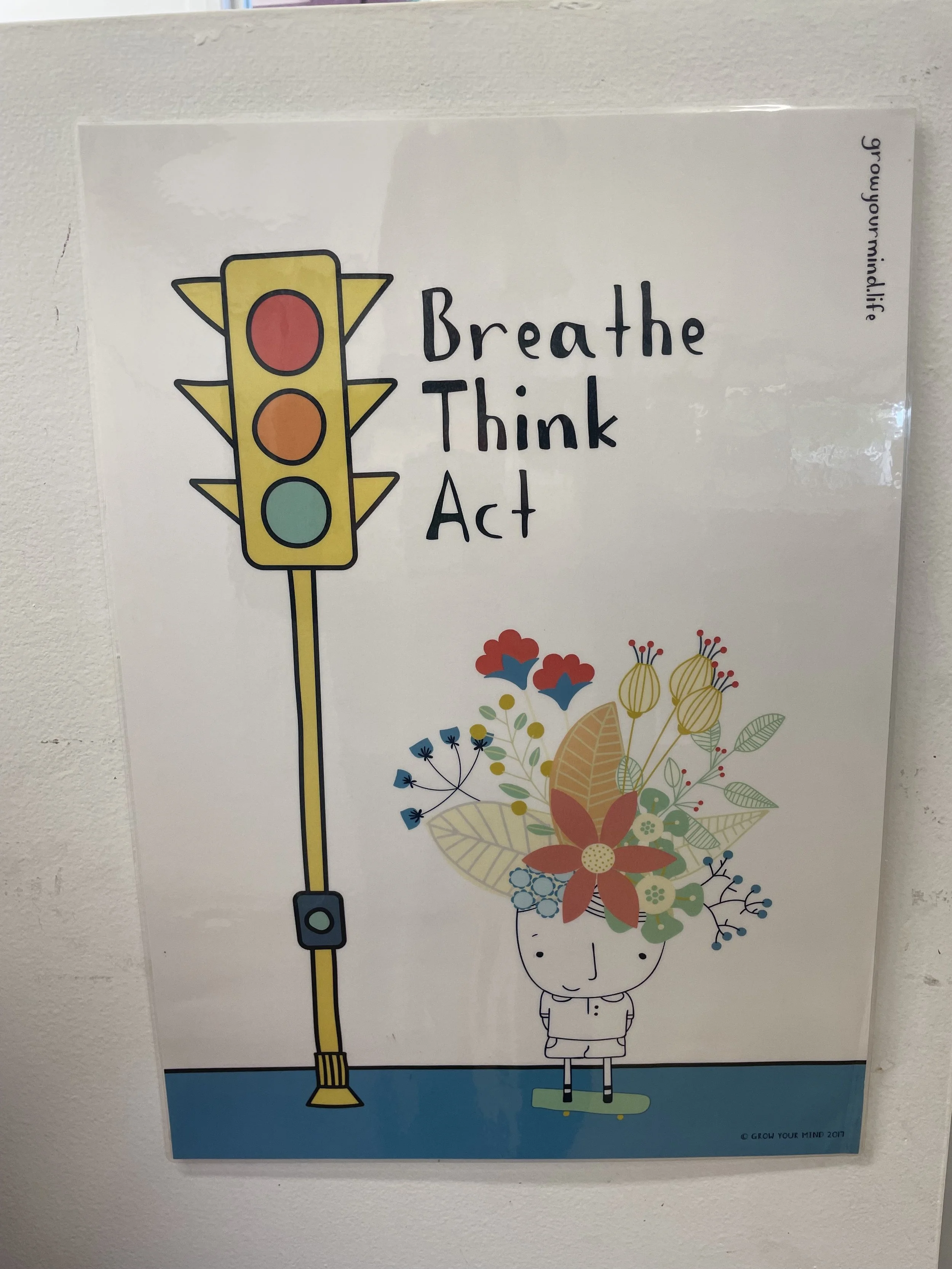Artefact 3-C
Growing emotional literacy
Using the arts to build emotional literacy

Learning to observe others is a key step in working out how they might be feeling and how to respond, which is a key relationship skill

Identifying calming strategies to use when feeling strong emotions
I have combined lessons in visual art techniques with discussions about feelings, which children explored using their own art journals. The image on the left shows an entry in a child’s art journal, combining splatter painting, emoji stickers, and a hypothetical script around noticing the emotions of others and what they might say in response. The second image shows a zen-doodle of a child’s hand, in which they have written strategies they can use when they need to calm down.
The images above show the sequence of a lesson in which we first discussed the difference between feelings and actions, and that generally we can't see feelings unless they are demonstrated through actions (body language) or words. I then gave examples which I had printed on cards and then following a discussion of each, the children then classified them as either a feeling or an action. Some of the feelings might be strongly associated with actions, such as the feeling “tired” and the actions “yawning” or “stretching”.
Following this activity, we then talked about the three main styles of communicating our feelings, especially during or after a conflict – aggressive, passive and assertive – and the relative effectiveness of each style for communicating our feelings. We then talked about how it looks and sounds when we use our bodies and words to communicate using these three different styles and we explored this through drama. The children got into small groups and improvised a drama in which there was a conflict. The first time they communicate with each other using passive or aggressive words and actions, and then they replayed the same scenario again using assertive communication. They could all see that assertive communication, which we defined as respectfully letting the other person know our needs, how we are feeling and how another's actions have impacted us, is the best way to resolve our disagreements. The final two images show examples of the children’s skits.
Social-emotional learning programs
Calm space

Calm space

The four animals and the regions in our brains they represent

A reminder to breathe to give our brains time to think before acting




